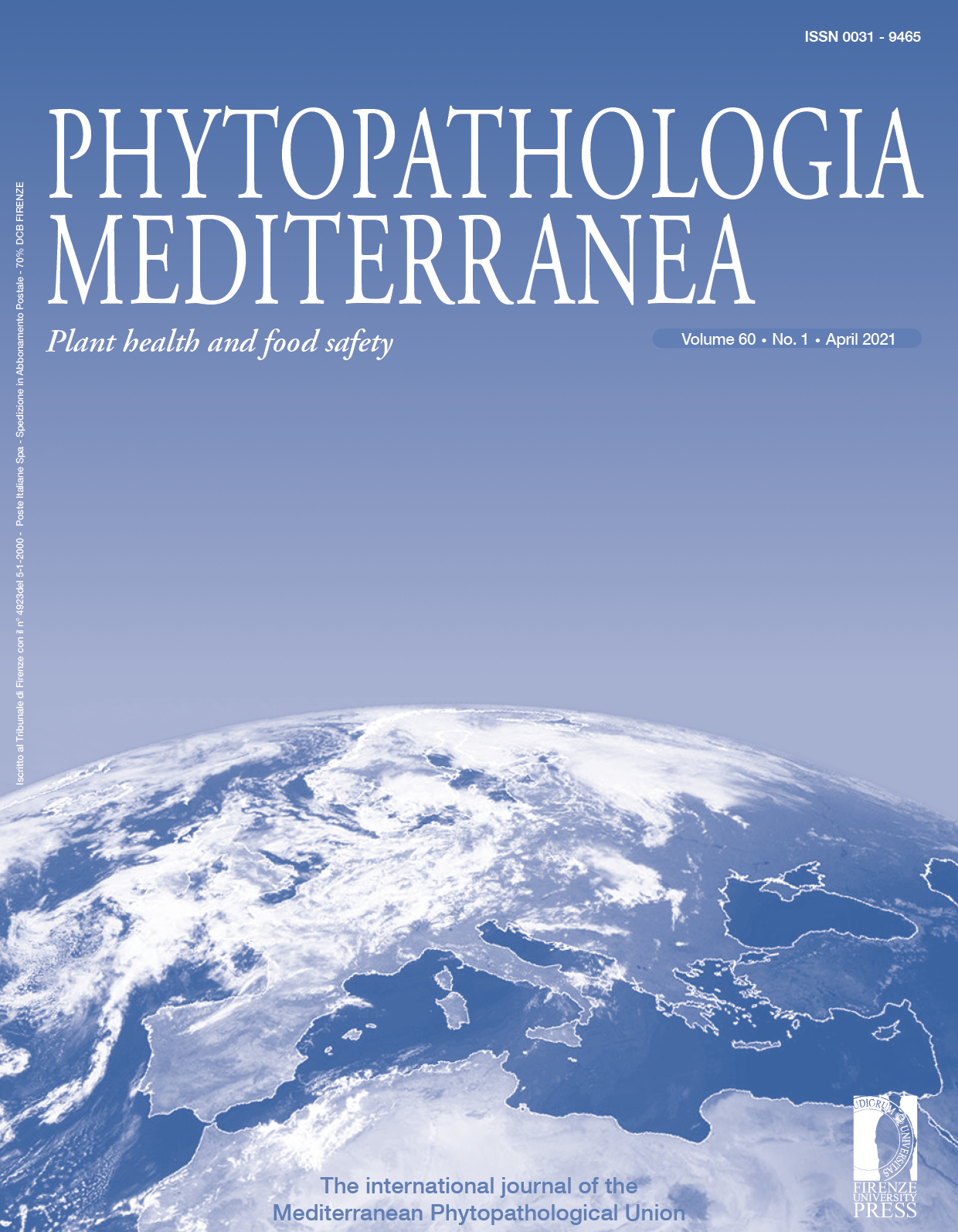Published 2021-05-14
Keywords
- Botryosphaeriaceae,
- forest ecosystems,
- olicleistanone,
- toxins
How to Cite
Abstract
A new cleistanthane nor-diterpenoid, named olicleistanone (1), was isolated as a racemate from the culture filtrates of Diplodia olivarum, an emerging pathogen involved in the aetiology of branch canker and dieback of several plant species typical of the Mediterranean maquis in Sardinia, Italy. When the fungus was grown in vitro on Czapek medium, olicleistanone was isolated together with some already known phytotoxic diterpenoids identified as sphaeropsidins A, C, and G, and diplopimarane (2-5). Olicleistanone was characterized as 4-ethoxy-6a-methoxy-3,8,8-trimethyl-4,5,8,9,10,11-hexahydrodibenzo[de,g]chromen-7(6aH)-one. When D. olivarum was grown on mineral salt medium it produced (-)-mellein (6), sphaeropsidin A and small amounts of sphaeropsidin G and diplopimarane. Olicleistanone (1) exhibited strong activity against the insect Artemia salina L. (100% larval mortality) at 100 μg mL-1 but did not exhibit phytotoxic, antifungal or antioomycete activity. Among the metabolites isolated (1-6), sphaeropsidin A (2) was active in all bioassays performed exhibiting strong phytotoxicity on leaves of Phaseolus vulgaris L., Juglans regia L. and Quercus suber L. at 1 mg mL-1. Sphaeropsidin A (2) also completely inhibited mycelium growth of Athelia rolfsii, Diplodia corticola, Phytophthora cambivora and P. lacustris at 200 μg per plug, and was active in the Artemia salina assay. Also in this assay, diplopimarane (5) and sphaeropsidin G (4) were active (100% larval mortality). Diplopimarane also showed antifungal and antioomycete activities. Athelia rolfsii was the most sensitive species to diplopimarane. Sphaeropsidin C (3) and (-)-mellein (6) were inactive in all bioassays. These results expand knowledge on the metabolic profile of Botryosphaeriaceae, and embody the first characterization of the main secondary metabolites secreted by D. olivarum.







